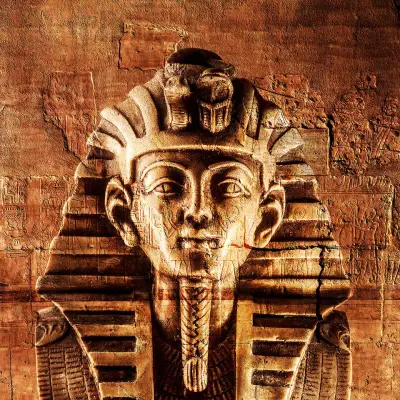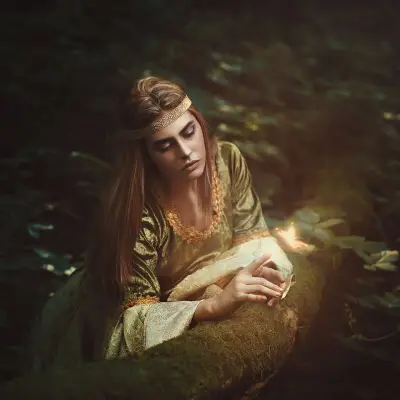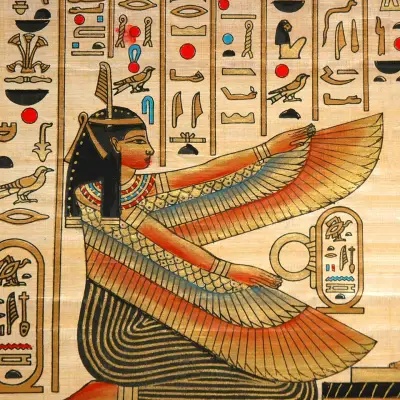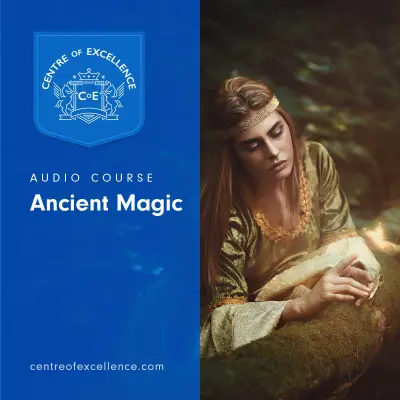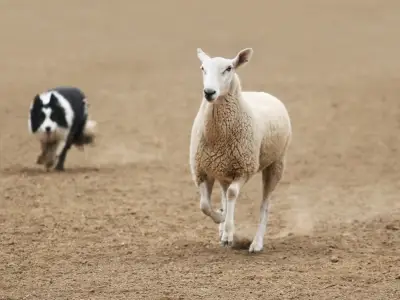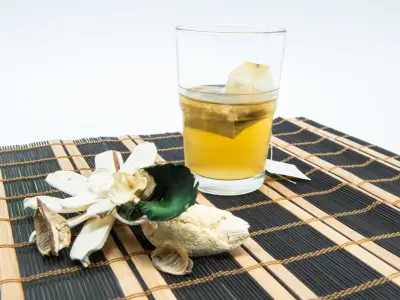You may have spotted koi fish gliding gracefully through a tranquil pond or featured in traditional artwork or tattoos. With their vivid colours and calm presence, koi are a joy to look at—but did you know they hold deep meaning in Japanese culture?
Whether you've seen them during a visit to Japan, in a serene garden scene, or in a powerful tattoo design, koi fish are more than just beautiful creatures. They symbolise qualities like perseverance, love, transformation, and even spiritual strength. In this post, you’ll discover the rich layers of koi fish symbolism and why these mesmerising fish are so cherished in Japanese tradition.
Jump to:
Recommended for you!
Best SellersWhat is the Meaning of the Koi Fish?
Known in Japanese as nishikigoi (錦鯉), koi fish are a symbol of Japanese culture. With their graceful movement and vivid colours, they’ve become an iconic part of Japanese gardens, artwork, and even tattoo culture. But beyond their beauty, koi carry powerful symbolic meaning.
In Japan, the koi fish’s meaning is deeply embedded in Japanese folklore, religion, and traditional beliefs. The meaning of a koi fish reflects some of the most cherished values in Japanese culture—strength, transformation, perseverance, love, and good fortune.
What Do Koi Fish Symbolise?
The symbolism of koi fish in Japanese culture often touches on ideas of resilience, ambition, emotional depth, and spiritual growth. At the heart of their meaning is a respect for inner strength and the courage to move forward, no matter the current. In Japanese tradition, koi fish represent themes like:
Perseverance and Strength
Koi fish are perhaps best known for symbolising resilience. In ponds and rivers, they’re admired for their ability to swim upstream, even through powerful currents. This image has become a powerful metaphor for persistence and determination.
The origin of this meaning lies in a legend from ancient China that Japan later adopted. According to the story, a group of koi swam up the Yellow River, battling a strong current. One particularly strong and persistent koi managed to leap over a waterfall called the Dragon Gate. As a reward, the gods turned it into a mighty dragon. This tale represents overcoming obstacles and achieving greatness through hard work and unwavering resolve.
Love and Friendship
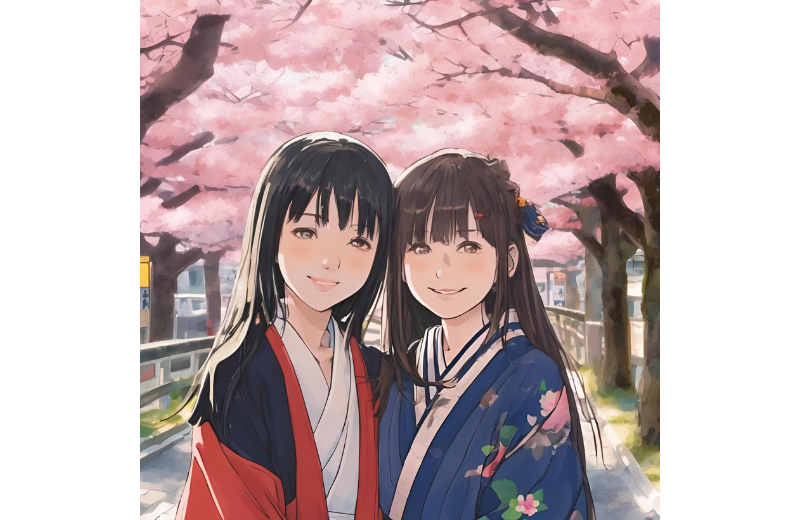
There’s a special dual meaning in the Japanese word koi (恋), which also translates to romantic love or affection. Because of this, koi fish symbolise deep emotional connection, sincerity, and long-lasting love.
Koi are often used to represent strong romantic relationships or loyal friendships. Their gentle nature and graceful presence are symbols of emotional depth and devotion. When shown swimming together, koi are a visual representation of balanced, harmonious relationships.
Expressions like koi no yokan, which describes the feeling that love is inevitable upon meeting someone, reflect the koi’s emotional symbolism. In this way, the koi fish becomes not only a symbol of love, but of the meaningful moments and unspoken connections that bring people together.
Wealth, Luck and Success
Koi fish are also associated with good fortune and prosperity. Certain colours, especially gold and yellow, represent material wealth and success. In many Japanese homes and gardens, golden koi are included to attract abundance and luck.
The koi’s determined spirit and ability to swim against the current are also seen as metaphors for ambition and self-made success. They’re often connected with achievement and personal growth, not just peace and beauty.
Gold koi are typically linked with wealth, while red koi symbolise love, and black koi are tied to overcoming life’s difficulties. These colours are chosen carefully in design, tattoos, and garden layouts to reflect specific hopes and energies.
Spiritual Meaning and Growth
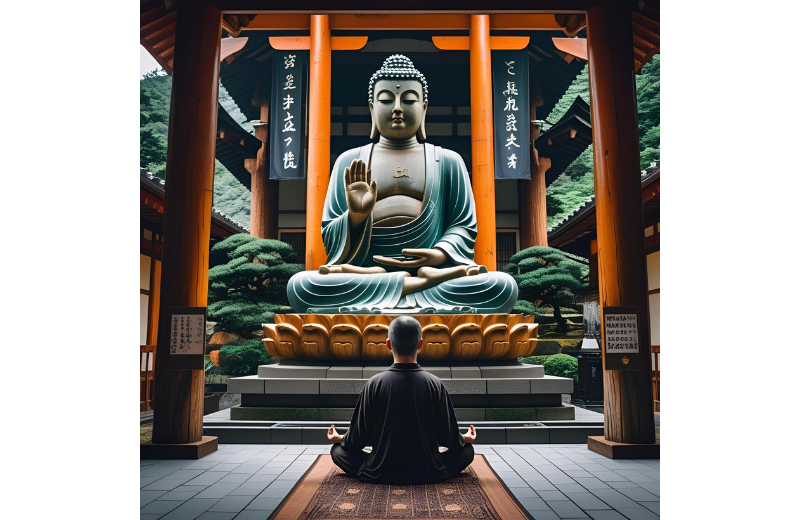
Koi fish are respected in spiritual contexts, too. In Buddhist traditions, koi symbolise the inner strength needed for enlightenment. Like a monk on a journey of self-discovery, the koi swims with purpose, reflecting serenity and resilience.
In this sense, the koi fish meaning is linked to personal evolution. Spiritually, seeing a koi fish may be a reminder to remain steady on your path and to trust that growth often comes through challenge. Their tranquil movement through water is also seen as a sign of calm determination and mindful living.
Duality and Harmony in Pairs
Images of two koi swimming together are common in Japanese art and tattoos. These pairings often reflect harmony and balance, especially when depicted in a yin-yang formation.
In tattoo culture, two koi may swim upstream or down, reflecting a relationship that has faced adversity or found peace. The symbolism is flexible, but always rooted in unity, balance, and shared strength.
Personal Power in Tattoos
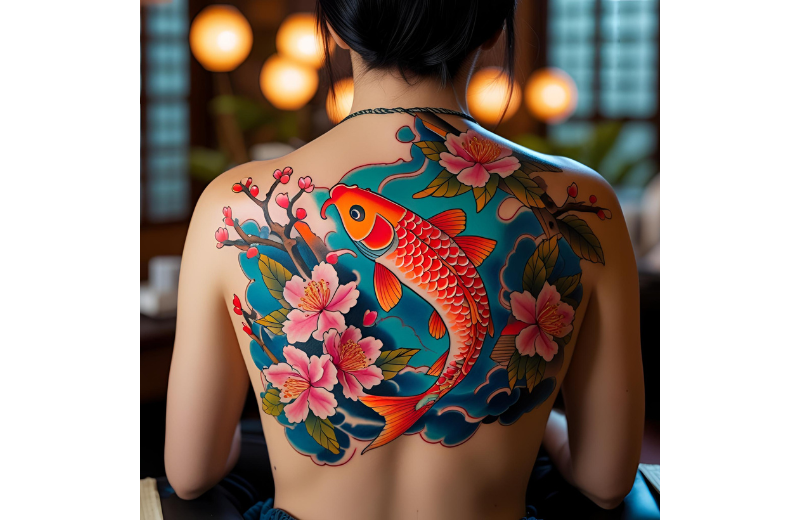
Koi fish tattoos are some of the most meaningful and aesthetically rich tattoo designs. Whether in traditional Japanese style or more modern interpretations, they’re full of symbolism.
Koi fish tattoos often represent personal transformation, strength through adversity, or an emotional journey. A koi swimming upstream may show that the wearer is still overcoming a challenge, while one swimming downstream may suggest that the person has succeeded and is now at peace.
Koi tattoos are widely respected and admired for their deep cultural symbolism. When done with appreciation and thought, they are a beautiful way to honour both personal experiences and Japanese tradition.
Many women choose koi tattoos to symbolise grace, inner strength, and resilience. Paired with symbols like cherry blossoms or the lotus flower, they may also represent emotional healing and personal growth.
Meaning Through Colour
In Japanese koi fish symbolism, colour plays a central role. Each shade carries a distinct meaning:
- Red koi: Passion, strong love, and the strength of a mother
- Black koi: Overcoming struggle, personal growth, and resilience
- Gold koi: Prosperity, financial success, and fortune
- Blue koi: Calmness, masculinity, and peace
- White koi with red markings (Kōhaku): Career success and new beginnings
Legendary Origins and Folklore
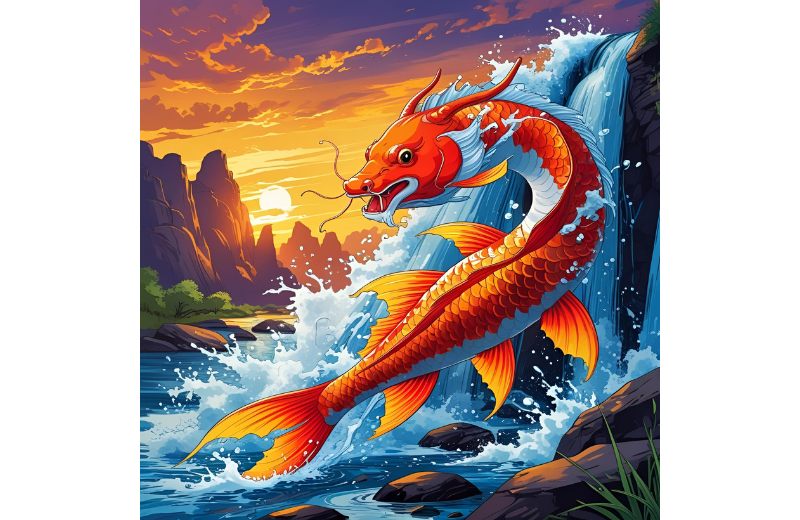
The most famous myth tells of the koi that swam up the Yellow River, leaping up the Dragon Gate waterfall to become a dragon. This story is a powerful metaphor for perseverance, growth, and ultimate transformation.
This legend inspired many traditions. On Children’s Day in Japan, colourful carp-shaped streamers called koinobori are flown outside homes to represent the strength and future success of the children in the family.
These stories remind us of the koi’s most enduring message: keep moving forward, even when it’s hard.
Emotion, Identity and Symbolism in Daily Life
In Japan, koi fish are treated with deep respect. Some koi live over 100 years—Hanako, one famous koi, reportedly lived to 226. Families pass koi down through generations, forming emotional connections and treating them as more than just pets.
Many people believe that koi fish can even recognise humans. Koi raised in peaceful environments often learn to recognise their keepers and respond to feeding, making them symbols of trust, peace, and companionship.
In relationships, they can symbolise deep affection, commitment, and the quiet strength of emotional bonds. For some, koi tattoos or artwork mark personal milestones in romance, growth, or healing.
Recommended for you!
Best SellersCommon Questions About Koi Fish in Japanese Culture
What is the quote about the koi fish?
A well-known Japanese phrase is “Koi no taki-nobori”—“koi climbing the waterfall.” It’s a poetic way to express determination, ambition, and the beauty of never giving up.
Are koi fish Japanese or Chinese?
Koi carp originated in China, but the colourful varieties we know today were bred and popularised in Japan, making them a central symbol of Japanese culture. Over time, koi have become deeply embedded in Japanese aesthetics, tradition, and spirituality.
Can koi fish live 200 years?
While most koi live between 25 and 35 years, some have been documented living for over a century. The most famous example is Hanako, a koi that reportedly lived to the remarkable age of 226, passing down through generations of one family.
What is the spiritual meaning of seeing a koi fish?
Spiritually, koi symbolise peace, personal transformation, and the ability to overcome obstacles. Seeing one, whether in a dream, meditation, or in real life, can be a reminder to stay steady on your path and embrace growth, even when it’s difficult.
How much does a koi fish cost?
Prices of koi vary depending on the size, age, and colour of the fish. A basic koi might cost less than £50, while high-grade or rare specimens can sell for thousands. The most expensive koi tend to be pure white with vivid red markings (like Kohaku) or rare golden varieties.
What is the meaning of koi fish in mental health?
Koi fish often symbolise resilience and emotional strength in the context of mental health. For many, koi represent the determination to keep going during tough times, making them a comforting symbol of hope, healing, and self-growth.
What does koi mean in Japanese slang?
In informal language, koi (恋) refers to romantic love or infatuation. It appears in popular culture, songs, and everyday speech to express affection or the feeling of being in love.
Which colour of koi is the most expensive?
The most expensive koi are often Kohaku—pure white fish with vivid red markings that are highly prized in competitions. Other costly varieties include Ogons (metallic gold koi) and rare patterned koi with perfect symmetry and vibrant colour.
Study Our Japanese History and Culture Diploma for £29
If this topic has inspired you to explore more about Japan’s traditions, stories, and way of life, you can continue your learning with the Introduction to Japanese History & Culture Diploma Course from Centre of Excellence. It’s designed for curious learners of all backgrounds and offers rich insights into the customs and beliefs that shape Japan.
